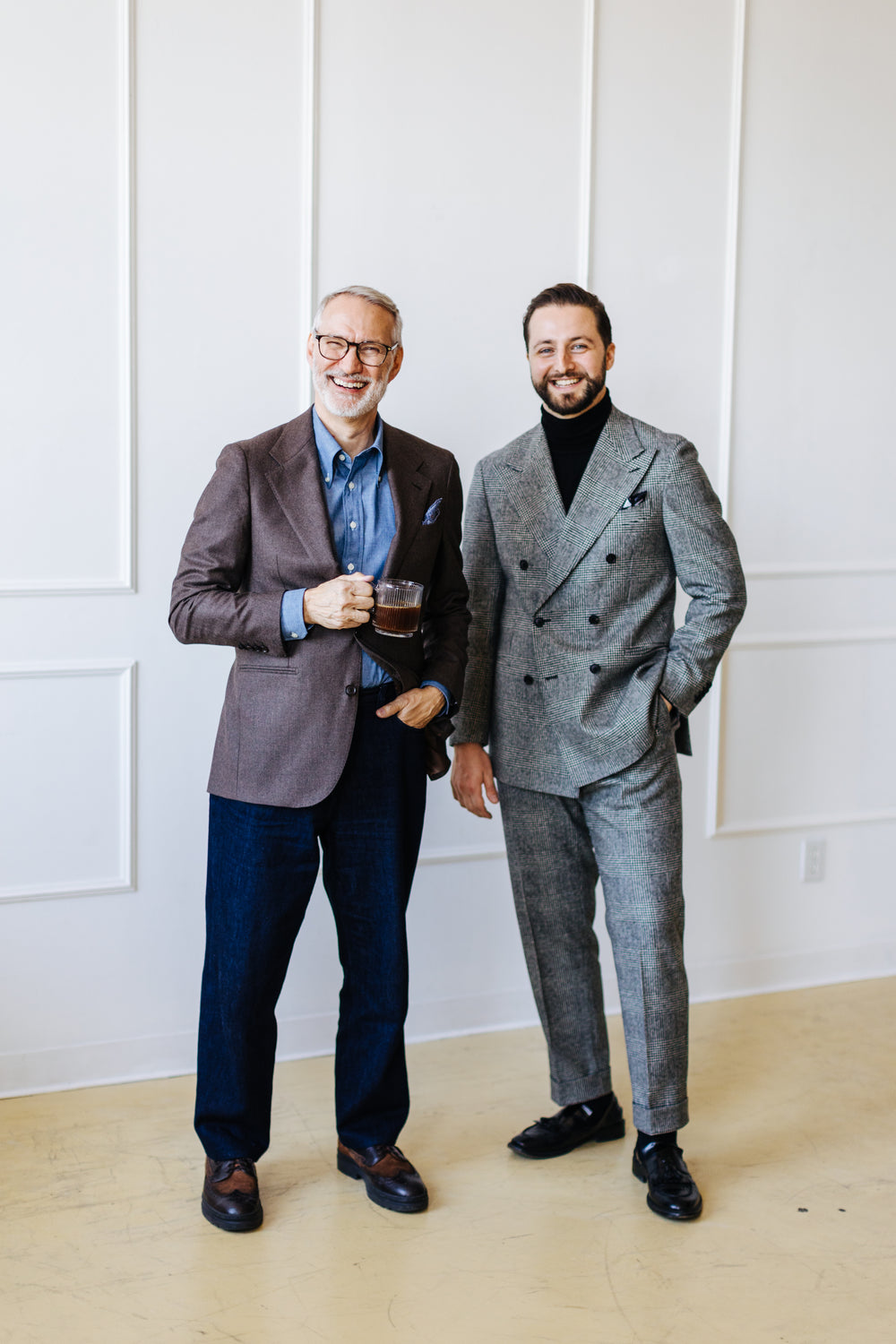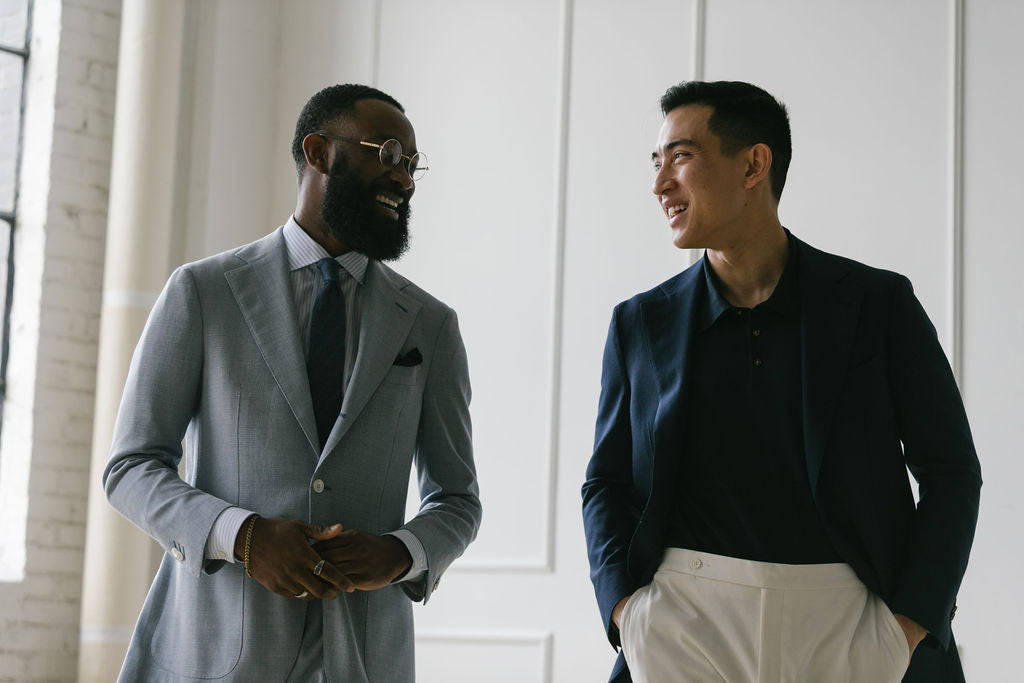In today's more casual fashion climate, many men are looking for suits that offer versatility—garments that can be broken down and worn as separate pieces. A well-designed suit that works as separates gives you significantly more outfit options and better value from your investment. But what makes a suit work well when split into individual pieces? Let's explore the key elements to consider when designing or purchasing a suit that seamlessly transitions between formal and casual settings.
Fabric Matters
The foundation of any versatile suit begins with the right fabric. When designing a suit that will work as separates, avoid overly shiny or silky fabrics that scream "formal suit jacket" when worn alone.
Great fabric options include:
- Flannel: With its slightly hairy texture and sweater-like feel, flannel offers a natural casualness that pairs well with jeans or chinos.
- Seersucker: This cotton fabric makes for fantastic summer suits and separates. The jacket can easily be worn with jeans, while the trousers work well with polos for an elevated warm-weather look.
- Corduroy: Originally a workwear fabric, corduroy (especially pin-wale with thin lines) naturally complements denim and other casual pieces.
- Wool-Linen Blends: These create casual suits that transition effortlessly to separates. The open weave provides a relaxed appearance perfect for pairing with items like white trousers or casual shirts.
Note: Be aware that open-weave fabrics may develop pills if worn frequently, so factor this into your decision if you're rough on your clothes.
Design Details That Make a Difference
Shoulders
One of the most important elements in creating a jacket that works as a separate is the shoulder construction:
- Soft Shoulders: For versatile separates, opt for minimal or no shoulder padding. A soft, natural shoulder line helps the jacket feel more like a blazer when worn casually.
- Structured Shoulders: Jackets with padding and roping (the slight ridge at the sleeve head) will always feel more formal and can look awkward when paired with jeans.
Button Configuration
- Three-Roll-Two: This configuration (where the lapel rolls to the second button, but there's a hidden third button underneath) provides a slightly more casual appearance while maintaining the clean look of a two-button jacket.
- Two-Button: More formal and traditional, but still versatile depending on other design elements.
Pocket Styles
Your pocket choices significantly impact how formal a jacket appears:
- Chest Pocket: A standard barchetta (curved "little boat") pocket works well for both formal and casual settings. For an even more casual look, consider a patch chest pocket.
-
Hip Pockets:
- Flap pockets are business-appropriate but still versatile
- Jetted pockets offer a clean, sleek appearance
- Patch pockets immediately make a jacket more casual and easier to wear with jeans
Sleeve Buttons
- Formal: Four kissing buttons (where the buttons touch or slightly overlap)
- Casual: Consider using fewer buttons or spacing them further apart for a more relaxed, American style
Lapel Style
- Notch Lapel: The most versatile option that works well dressed up or down
- Peak Lapel: Typically too formal for casual wear—avoid this if you want to wear your jacket with jeans or chinos
The Final Verdict
By carefully considering these design elements, you can create a suit that transitions seamlessly between formal business settings and more casual environments. The key is finding the right balance—a jacket that doesn't look too formal when worn with jeans, and trousers that can stand alone with more casual tops.
Remember that the goal is to make your suit jacket feel more like a blazer when worn separately. This means avoiding overly formal details and embracing elements that bring a touch of casual sophistication to your look.
Whether you're working with a tailor or shopping off-the-rack, these guidelines will help you select suits that offer maximum versatility and value in your wardrobe.


